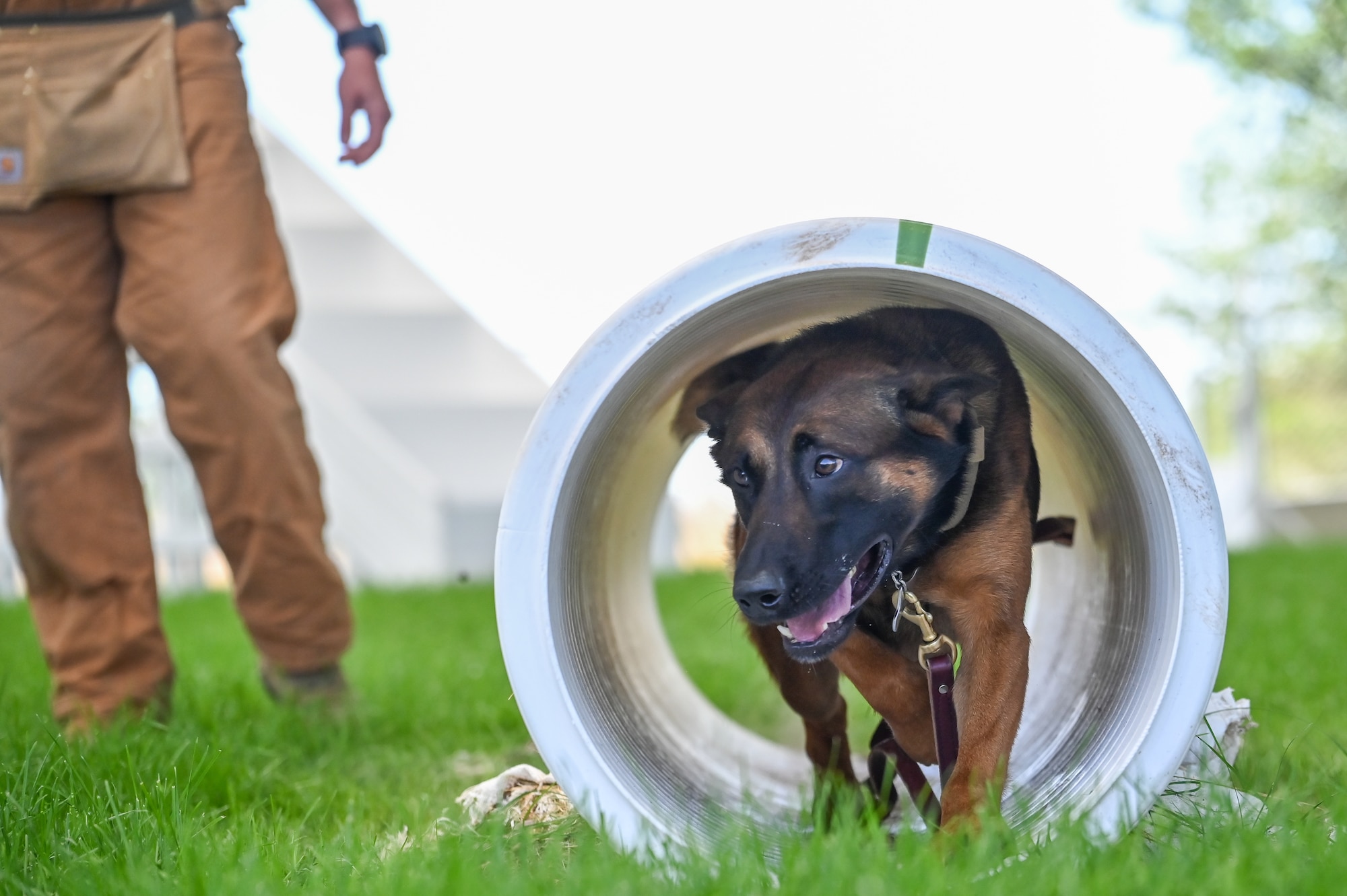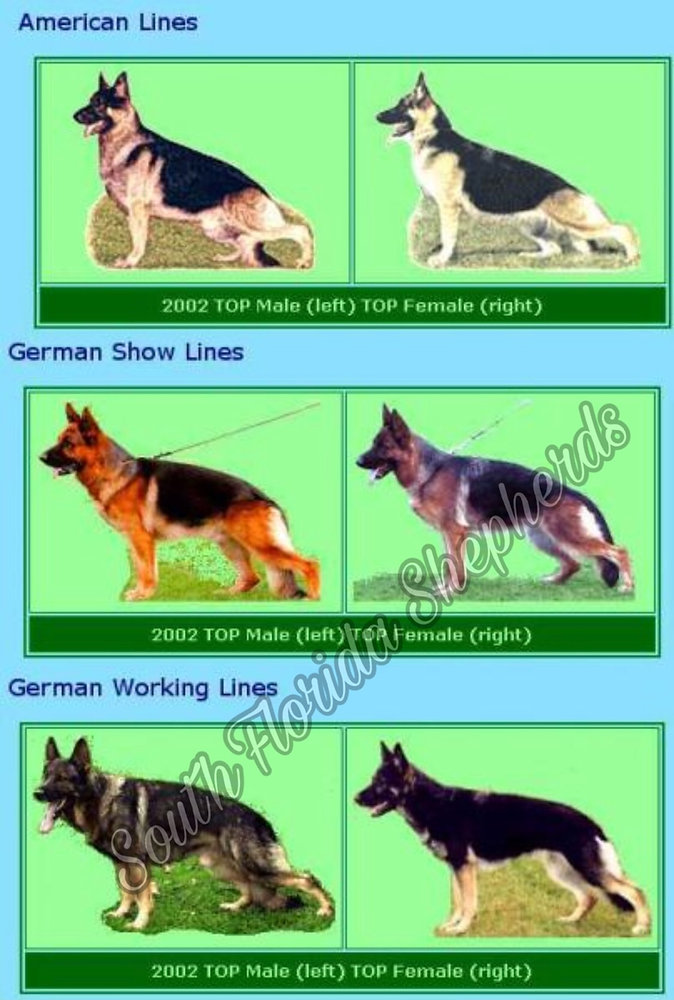German Shepherds are renowned for their intelligence, loyalty, and versatility, making them a popular choice for various roles, including as show dogs and working dogs. Understanding the differences between a German Shepherd show dog and a working dog is crucial for anyone considering bringing home one of these remarkable breeds. Show dogs are bred and trained specifically for conformation events, focusing on physical appearance and adherence to breed standards. On the other hand, working dogs are bred for tasks like herding, protection, search and rescue, and police work, emphasizing traits like obedience, stamina, and drive. In this blog, we will delve deeper into the key distinctions between German Shepherd show dogs and working dogs to help you make an informed decision based on your preferences and lifestyle.
Introduction: Understanding the Differences
When comparing a German Shepherd as a show dog versus a working dog, it’s essential to delve into the distinct characteristics and purposes that define each role. The German Shepherd breed is known for its versatility, intelligence, and loyalty, making it excel in various roles based on its training and upbringing.
Demeanor and Behavior
German Shepherds bred for show purposes are typically more focused on appearance, temperament, and adherence to breed standards. These dogs are often selected based on their conformation to the breed standard and may have a calmer demeanor suitable for the show ring.
On the other hand, German Shepherds bred for working roles are chosen for their drive, agility, and ability to perform specific tasks. They exhibit high energy levels, intense focus, and a strong work ethic, making them ideal for tasks like herding, search and rescue, or police work.
Physical Attributes and Structure
Show German Shepherds are bred to have a more pronounced angulation in their hindquarters, giving them a sloped back appearance. They may have a fuller coat and a more “showy” look with a focus on aesthetics and overall balance.
Working German Shepherds, on the other hand, are often bred for function over form. They may have a straighter back, allowing for better endurance and agility in tasks that require physical exertion. Their coat may be more utilitarian, providing protection without impeding their movement.

History and Background of German Shepherd Dogs
The history of German Shepherd Dogs dates back to the late 19th century in Germany. They were originally bred for herding and protecting sheep, hence the name “German Shepherd.” German Shepherd Dogs have since gained popularity worldwide for their loyalty, intelligence, and versatility.
Origins of the Breed
The German Shepherd breed was developed by Captain Max von Stephanitz in the 1890s. He aimed to create a versatile working dog with exceptional intelligence and strength. The first German Shepherd, named Horand von Grafrath, was recognized as the foundation of the breed.
Evolution into Working and Show Dogs
Over time, German Shepherds evolved into two distinct categories: working dogs and show dogs. Working line German Shepherds are bred for their abilities in herding, guarding, police work, and search and rescue. Show line German Shepherds, on the other hand, are bred primarily for conformation shows, emphasizing physical appearance and structure.
- Working Dogs: Working line German Shepherds excel in tasks that require physical endurance, intelligence, and obedience. They are often used in police and military roles due to their strength and trainability.
- Show Dogs: Show line German Shepherds are bred to meet the standards set by kennel clubs for conformation shows. They prioritize physical attributes such as coat color, size, and overall appearance.
Characteristics and Traits of Show German Shepherds
German Shepherds bred for show purposes possess distinct characteristics and traits that set them apart from working line German Shepherds.
Physical Appearance
Show German Shepherds typically have a more pronounced angulation in their hindquarters, a straighter back, and a more refined head compared to working line German Shepherds.
Their coat is often longer and thicker, showcasing the classic black and tan coloration.
Temperament
Show German Shepherds are bred for conformation and temperament suitable for the show ring. They are known for their calm, confident, and composed demeanor.
They exhibit strong trainability, making them easy to handle in a structured environment.
Characteristics and Traits of Working German Shepherds
German Shepherds bred for work possess distinct characteristics and traits that set them apart from show dogs. These working dogs are known for their loyalty, intelligence, agility, and versatility, making them ideal for various tasks.
Physical Attributes
Working German Shepherds typically have a more athletic build compared to show dogs. They are agile and have strong muscles, enabling them to perform tasks requiring physical strength and endurance.
Additionally, their coat is usually shorter and denser, providing protection in different working environments.
Temperament and Drives
These working dogs exhibit high levels of drive and determination, making them excel in roles such as search and rescue, police work, and herding. They are quick to learn, highly trainable, and possess a strong work ethic.
Furthermore, their protective instincts and loyalty make them exceptional partners for various working scenarios.
Training and Socialization Differences
When it comes to German Shepherd show dog vs working dog, there are significant differences in their training and socialization needs. Show dogs are primarily trained for conformation events and need to have a calm and composed demeanor in the ring. On the other hand, working dogs, such as those used in police or military roles, require intensive training for specific tasks like tracking, protection, and obedience.
Training Requirements
Show dogs are often trained to stand still for examination while working dogs need to be trained in advanced obedience and agility skills. The training methods for each type of dog vary based on their intended roles and activities.
Socialization Needs
In terms of socialization, show dogs are frequently exposed to various environments and interact with strangers during shows, requiring them to be friendly and approachable. Conversely, working dogs need to be socialized to different working conditions and environments, such as noisy streets or crowded areas.
- Proper socialization also helps prevent aggression issues in working dogs. It is essential for them to be comfortable around people and other animals.
Physical Differences and Standards
German Shepherds bred for show purposes typically have a more exaggerated physical appearance compared to working dogs. Show dogs often have a sloping back and a more angled hind leg conformation, giving them a sleek and graceful look.
Coat and Color
Show German Shepherds generally have a longer, fuller coat with rich colors such as black and red, black and tan, or sable. Working German Shepherds, on the other hand, have a shorter and denser coat that is more practical for their outdoor activities.
Body Structure
Working German Shepherds are bred for functionality, so they have a more agile and sturdy build. Their bodies are often more muscular and straight-backed, aiding them in physical tasks. In contrast, show dogs may have a slightly less robust frame due to the emphasis on appearance over working ability.
Common Misconceptions Debunked
There are several common misconceptions when it comes to differentiating between German Shepherd show dogs and working dogs. Let’s debunk some of these myths with the latest information.
Myth 1: Show Dogs Are Just for Looks
Many people believe that German Shepherd show dogs are only bred for their appearance and have no real working ability. However, this is not entirely true. While show dogs are bred to meet the breed standards in terms of physical appearance, they also undergo training to showcase their intelligence and obedience.
Myth 2: Working Dogs Are Aggressive
Another common misconception is that working German Shepherds are always aggressive due to their role in tasks like police work or search and rescue. In reality, working dogs are trained to be disciplined, focused, and controlled in high-pressure situations. Their aggression is directed towards their tasks, not people.
Choosing the Right German Shepherd for Your Lifestyle
When considering whether to get a German Shepherd as a show dog or a working dog, it is essential to align your choice with your lifestyle and needs. German Shepherds are versatile and intelligent breed, but their specific traits can make them more suitable for either the show ring or working environment.
Fitness and Activity Level
German Shepherds, whether show or working lines, require ample exercise and mental stimulation to stay happy and healthy. If you lead an active lifestyle and enjoy outdoor activities, a working line German Shepherd may be more suitable as they have higher energy levels and drive for tasks like agility, obedience, or protection work. Stay active to keep your German Shepherd healthy and happy.
Temperament and Socialization
Both show and working line German Shepherds can make loyal and loving companions when well socialized. Show line Shepherds are often bred for conformation and may have a calmer temperament, making them suitable for families with children or elderly individuals. On the other hand, working line Shepherds are known for their protective instincts and may require experienced handling. Proper socialization plays a crucial role in shaping your dog’s behavior.
- Choose a German Shepherd based on your experience in handling dogs.
- Consider your family dynamics and living situation.
Frequently Asked Questions
- What is the main difference between a German Shepherd show dog and a working dog?
- The main difference lies in their purpose and job roles. Show dogs are bred and trained for conformation events to meet specific breed standards, focusing on appearance and movement. Working dogs, on the other hand, are bred and trained for specific tasks such as police work, search and rescue, herding, and protection.
- Are there differences in physical characteristics between a show German Shepherd and a working German Shepherd?
- Show German Shepherds typically have a more exaggerated appearance with a sloping back and a sleeker coat, conforming to breed standards set by kennel clubs. Working German Shepherds tend to have a straighter back, a fuller coat, and a more versatile build suitable for their intended tasks.
- Do show German Shepherds require different training compared to working German Shepherds?
- Yes, show German Shepherds are trained to excel in conformation events such as dog shows, focusing on grooming, stacking, and moving in a certain way to showcase their physical attributes. Working German Shepherds undergo extensive training specific to their job roles, including obedience, scent work, protection training, and more practical skills.
- Can a German Shepherd be both a show dog and a working dog?
- While it is possible for a German Shepherd to participate in both show and work activities, dedicated breeding lines are usually focused on either producing top-quality show dogs or high-performing working dogs. Mixing these two purposes may not always yield the desired results, as the emphasis on specific traits differs between the two types.
- Which type of German Shepherd makes a better family pet?
- Both show and working German Shepherds can make excellent family pets, but their suitability depends on individual personalities, training, and socialization. Show German Shepherds may have a calmer demeanor and be more suitable for families looking for a companion, while working German Shepherds may exhibit higher energy levels and require more mental and physical stimulation.
Concluding Thoughts: German Shepherd Show Dog vs Working Dog
Through our exploration into the world of German Shepherds, we have uncovered the defining disparities between show dogs and working dogs within this prestigious breed. Show dogs excel in conformation competitions, boasting elegant appearances and adherence to breed standards. On the other hand, working dogs showcase their unparalleled skills in tasks such as herding, protection, and search and rescue operations.
It is crucial for potential German Shepherd owners to discern their intended purpose for the dog, whether as a loyal companion or a reliable worker. By understanding the distinctive traits and requirements of show dogs and working dogs, individuals can make informed decisions that align with their lifestyle and expectations.
In conclusion, the German Shepherd breed’s versatility and intelligence shine through both in the show ring and the field, offering a glimpse into the remarkable capabilities of these magnificent canines.



